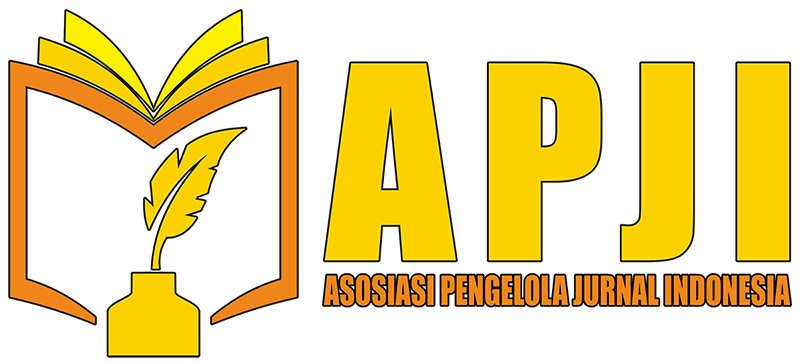Overview of Risk Factors in Hypertension Disease
Abstract
Background : Hypertension can generally be defined as systolic pressure of more than 140 mmHg and diastolic pressure of more than 90 mmHg. Human blood pressure naturally fluctuates throughout the day. Modifiable risk factors are (salt consumption, obesity, physical activity, smoking, stress). The purpose of this study was to determine the Description of Risk Factors in Hypertension Disease.
Methods: The research design used is descriptive of the Tanjung Paku Health Center Working Area, Solok City in 2024, in March - April 2024, data was collected from March 25 to April 6, 2024, the population was hypertensive patients in the Tanjung Paku Health Center Working Area, Solok City. The sample was taken by accidental sampling, formulating the sample with the slovin formula with a total of 55 respondents. Data was taken by filling out a questionnaire with respondents and observation.
Results: The results of the study obtained from the description of risk factors for hypertension showed that 45 (81.8%) respondents consumed 1 teaspoon of salt per day, 36 (65.5%) respondents were not obese, 31 (56.4%) respondents did not do physical activity, 43 (78.2%) respondents did not smoke, 54 (98.2%) respondents experienced mild stress.
Conclusion: Hypertension risk factors include salt consumption, obesity, lack of physical activity, smoking, and mild stress, which can increase the risk of complications.
Downloads
References
Andika, M. (2023). Kardiovaskular “ Hipertensi, Stroke,Anemia,Aritmia,Dislipedimia.”
Anshari, Z. (2020). Komplikasi hipertensi dalam kaitannya dengan pengetahun pasien terhadap hipertensi dan upaya pencegahannya. Jurnal Penelitian Keperawatan Medik, 2 No.
Bhattacharya, S., Bera, O. P., & Saleem, S. M. (2022). No Title. Dietary Salt Consumption Pattern as an Antecedent Risk Factor for Hypertension: Status, Vision, and Future Recommendations, 47, 422–430.
Black, J. M. (2014). Keperawatan medikal bedah Manajemen klinis untuk hasil yang diharapkan (S. K. Ns. Aklia Suslia (ed.))
Hasanudin. (2018). Hubungan aktivitas fisik dengan tekanan darah pada masyarakat penderita Hipertensi Di wilayah tlogosuryo kelurahan tlogomas kecamatan lowokwaru kota malang. Jurnal Keperawatan, 5.
Hutagaluh, M. S. (2019). Panduan lengkap stroke Mencegah, Mengobati dan Menyembuhkan.
Kartika, L. A. (2016). Asupan lemak dan aktivitas fisik serta hubungannya degan kejadian hipertensi pada pasien rawat jalan. Jurnal GIizi Dan Dietetik Indonesia, 4.
Manutung, A. (2019). Terapi Perilaku Pada Pasien Hipertensi.
Mayasari. (2019). Faktor - faktor yang berhubungan dengan kejadian hipertensi. Journal of Talenursing (JOTING), 1.
Prasetyaningrum, Y. I. (2014). Hipertensi Bukan Untuk Ditakuti.
Purwono, J. (2020). Pola konsumsi garam dengan kejadian hipertensi pada lansia Salt consumption pattern with hypertension in elderly. Jurnal Wacana Kesehatan, 5.
Ridwan, M. (2017). Mengenal, Mencegah & Mengatasi Silent Killer.
Roosihermiati, B., Harso, A. D., & Ariningrum, R. (2023). Faktor resiko dan pencegahan penyakit tidak menular di indonesia (A. Abadi (ed.)). Airlangga University press.
S.pikir, B. (2015). Hipertensi manajemen komprehensif. Airlangga University press.
Sinandia. (2019). Hubungan kebiasan merokok dengan kejadian hipertensi pada masyarakat pesisir Desa Tiberias Kecamatan Poigar Kabupaten Bolaang Mongondow. Jurnal Kesmas, 7.
Subrata, A. H. (2020). Hubungan stres dengan Tekanan Darah Pada penderita Hipertensi Usia Produktif. 1.
Talia, D. (2015). Hubungan Obesitas dengan Kejadian Hipertensi di Kecamatan Sintang, Kalimantan Barat. 42.
Tiara, U. I. (2020). Hubungan obesitas dengan kejadian hipertensi. Jurnal Stikes, 2.
Widiyono. (2022). Aktivitas fisik untuk mengatasi hipertensi. Lembaga Chakra Brahmanda Lentera.
Yulianto. (2021). Mengapa stroke menyerang usia muda.
Copyright (c) 2025 Niken Nurul Hanifah, Tintin Sumarni, Desi Deswita, Deharnita, Anita Mirawati

This work is licensed under a Creative Commons Attribution-NonCommercial-NoDerivatives 4.0 International License.
Copyright and License Statement
By submitting a manuscript to the Journal of Applied Holistic Nursing Science, the author agrees to this policy. No specific document approval is required.
Copyright:
Lisensi Creative Commons Atribusi-NonKomersial-BerbagiSerupa 4.0 Internasional
The copyright for any article in the Journal of Applied Holistic Nursing Science is fully held by the author under the Creative Commons CC BY-NC-SA 4.0 license.
1. The copyright of each article belongs to the author.
2. Authors retain all rights to their published work, including but not limited to the rights outlined on this page.
3. The author acknowledges that Journal of Applied Holistic Nursing Science is the first publisher under the Creative Commons Attribution 4.0 International License (CC BY-NC-SA-4.0).
4. Authors may separately submit their work, arrange for non-exclusive distribution of the manuscript previously published in this journal into other versions (e.g., submission to the author's institutional repository, publication in books, etc.), with acknowledgment that the manuscript was first published in Journal of Applied Holistic Nursing Science
5. The author guarantees that the original article, written by the authors named, has not been previously published, does not contain statements that are illegal, does not infringe upon the rights of others, and is subject to copyright exclusively held by the authors.
6. If the article is co-authored by more than one author, each submitting author guarantees that they have been authorized by all co-authors to agree to the copyright and licensing notice (agreement) on their behalf and agrees to inform co-authors of the terms of this policy.Journal of Applied Holistic Nursing Science will not be held liable for any issues arising from internal disputes between authors.
License:
Journal of Applied Holistic Nursing Science is published under the terms of the Creative Commons Attribution-NonCommercial-ShareAlike 4.0 International License (CC BY-NC-SA 4.0). This license allows anyone to:
Copy and redistribute the material in any medium or format, and remix, transform, and build upon the material, even for commercial purposes, as long as they credit the author for the original creation.





















